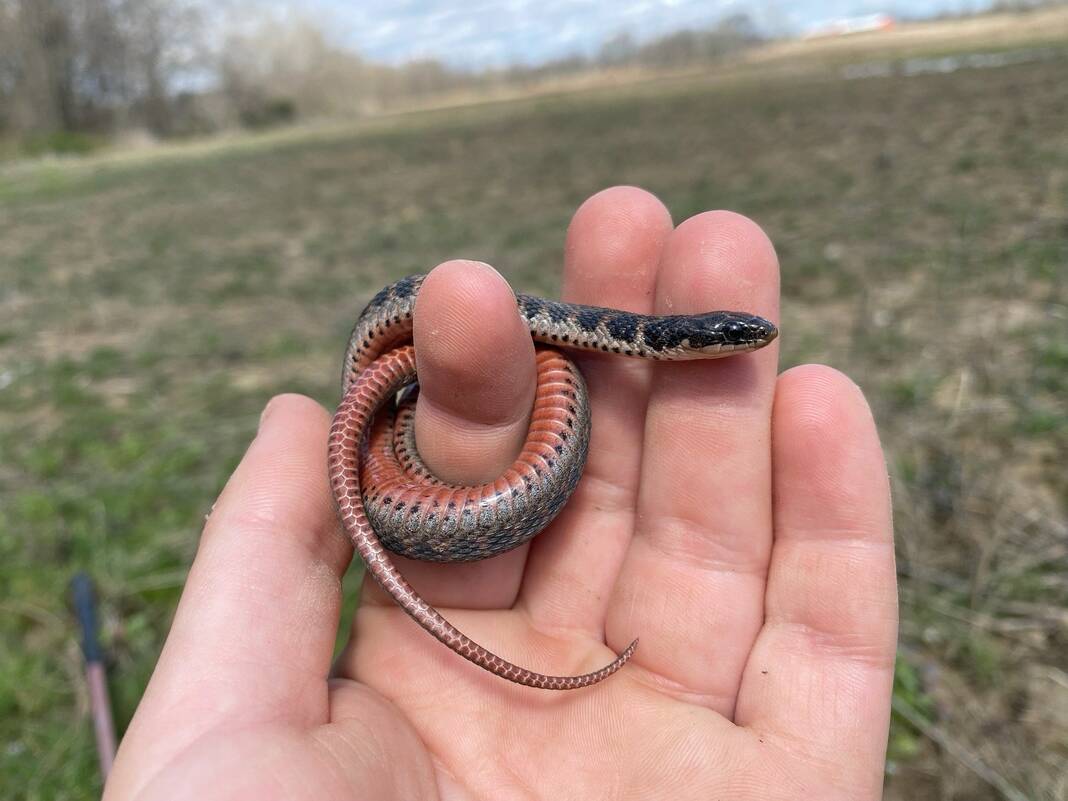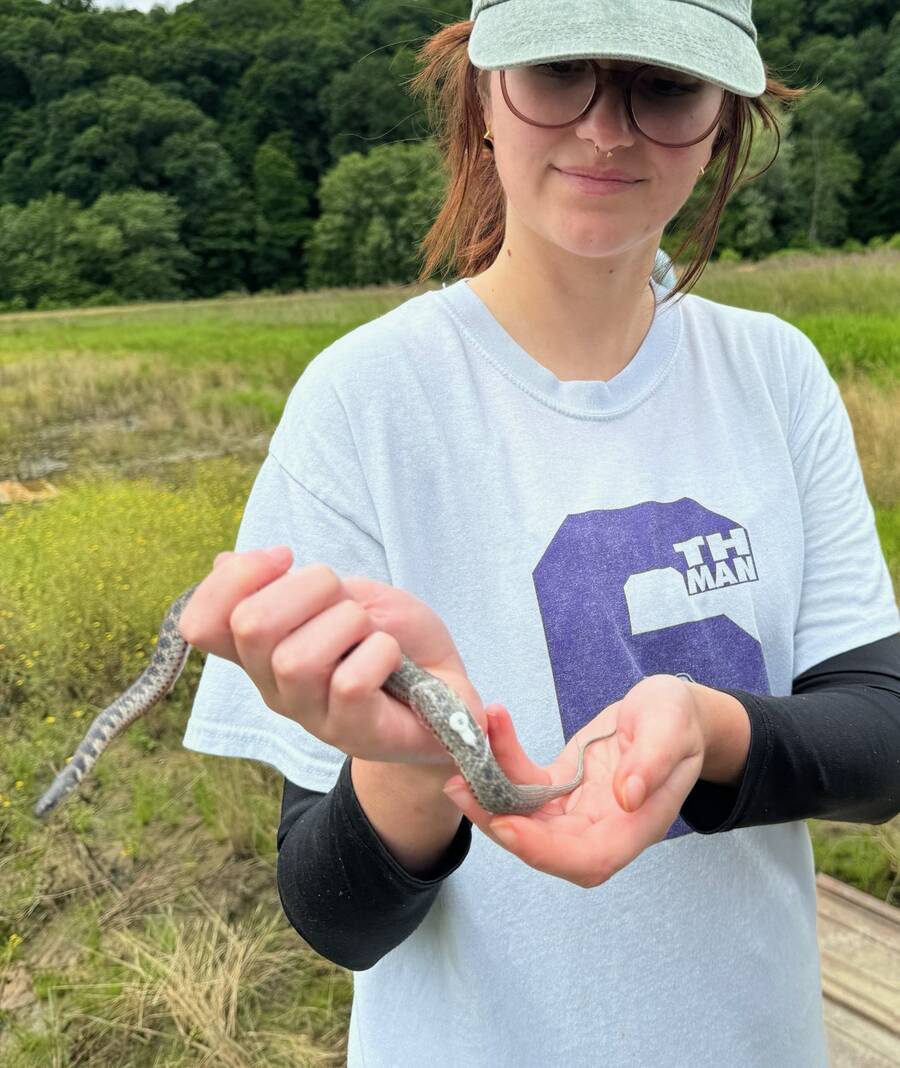
Kirtland’s snake are identifiable by their red stomachs with black dots surrounding it. They are non venomous and docile.

The Sycamore Land Trust has been taping or gluing very high frequency transmitters onto Kirtland’s snakes to track their movement.
The Sycamore Land Trust, Department of Natural Resources Herpetologists and the Indianapolis Zoo’s Global Center for Species Survival have teamed up to study and conserve the endangered Kirtland’s snake populations in south-central Indiana. These snakes are primarily found in the midwest.
The Sycamore Land Trust, a non-profit conservation that protects and conserves natural Indiana habitats including the Laura Hare at Downey Hill and Trevlac Bluffs nature preserves in Brown County has found Kirtland’s snakes on their properties.
“It started for us in probably 2021 in full,” Land Stewardship Director Chris Fox said. “We were really planning wetland conservation and I thought it would be a good idea to get a baseline on species we had in the areas. We were interested in anything and everything, and one of the things we found were Kirtland’s snakes.”
Fox said that when they found the snakes, they changed plans on where to develop wetlands in order to protect the population.
“We’ve learned a lot from our partnership with the DNR and Zoo,” Fox said. “We have also learned how resilient these snakes and nature are. We are finding them in areas we didn’t think we would. They might be able to coexist with farming if done in the right way. We want to make sure their populations are as large as they can possibly be to fight climate change and other illnesses that spread through reptile and amphibian populations.”
The Kirtland’s snakes are non-venomous and primarily live underground. Fox said they are docile and generally harmless to humans.
This species is the only blotched snake with a black hood in Indiana and only one of two small snakes with a red belly, according to Indiana Herp Atlas. The Kirtland’s snake may be differentiated by its reddish belly that is bordered by round black spots.
“We have found them on at least six of our properties that we can positively confirm,” Fox said. “Some properties we find one or two occasionally and those properties are smaller and don’t have much habitat for them. On a couple of the properties we have located a healthy population. At least one property has at least 30 individuals.”
The Sycamore Land Trust has been working on identifying individual snakes by photographing their spot patterns and colors. In the past, researchers would insert microchips or clip snakes’ scales in order to create specific scarring that was exclusive to each individual reptile. Fox said that they were looking for less invasive ways to study the species.
In April, the Sycamore Land Trust was awarded a global conservation research grant from the Indiana Zoological Society, Inc. for $23,000 to advance their studies on the Kirtland’s snakes and Cyprus fireflies, an endangered species of fireflies that have only been found in two places in Indiana including Bean Blossom Bottoms.
Fox said they were able to purchase new equipment that will allow them to track the movement of individual snakes using very high frequency radio transmitters. They were also able to fund interns for research and pay for education and outreach supplies.
Not much research has been done on the species before now, and Fox said that the trust would like to see the species gain recognition as endangered by the U.S. Fish and Wildlife Service to receive protection and conservation as a species.
“If you find them, report them to the DNR, if you can get photos without harassing the snake too much let the DNR or me know and I can forward it to the DNR,” said Fox. “After that, don’t mess with it. If it’s there, it’s probably doing okay. Try to limit anything that could hurt the snake.”
Reports on Kirtland’s Snake sightings can be sent to the Department of Natural Resources at [email protected].

